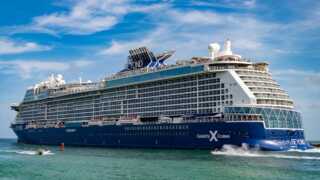img#mv-trellis-img-1::before{padding-top:66.666666666667%; }img#mv-trellis-img-1{display:block;}img#mv-trellis-img-2::before{padding-top:100%; }img#mv-trellis-img-2{display:block;}img#mv-trellis-img-3::before{padding-top:100%; }img#mv-trellis-img-3{display:block;}img#mv-trellis-img-4::before{padding-top:100%; }img#mv-trellis-img-4{display:block;}img#mv-trellis-img-5::before{padding-top:100%; }img#mv-trellis-img-5{display:block;}img#mv-trellis-img-6::before{padding-top:100%; }img#mv-trellis-img-6{display:block;}Beautiful white-sand beaches backed by luxurious condominiums, swathes of protected Atlantic forest that have somehow been left untouched amidst a fast-growing urban sprawl, and all the vibrant samba bars and kerbside boteco bars:
Everyone knows and loves Rio de Janeiro, and there’s definitely a reason why it’s been recently crowned the best beach city in South America.
Gorgeous as Rio may be, you’d be surprised to learn it’s not where Brazilians themselves flock to for vacations.
In fact, the Brazilian Northeast is the absolute leader in domestic reservations, with one city in particular, underrated Salvador de Bahia, being a major highlight:
The City Brazilians Themselves Love More Than Rio
According to a new survey by Decolar, a leading travel technology company in Latin America, Salvador de Bahia is one of the most rapidly growing destinations in Brazil, already ranking 13th and rising fast.
A bigger emphasis is placed on Bahia, the state, with 4 cities featuring in the top 20 most sought-after, but Salvador is the obvious gemstone here. As the local Secretary of Tourism pointed out, it is ‘one of Brazil’s most iconic destinations’, and we’re inclined to agree.
One of the first cities settled by the Portuguese upon making landfall in Brazil, Salvador (as it is commonly called in the short form) has a rich history spanning over five centuries, and both the cultural heritage and architectural charm to back it up.
A Picture-Perfect Colonial Center
Its main attraction, Pelourinho, is a typical Portuguese-style colonial townscape, with cobbled streets, Baroque churches, and colorful house facades dating as far back as the 17th century. Straddling a hill overlooking the harbor, it is also one of Brazil’s UNESCO World Heritage Sites.
There is a plethora of churches here, but the most visually striking is, without question, the Church & Convent of Saint Francis, covered in azulejos (the unmistakable blue-and-white Portuguese tiles) and lavishly decorated with gold leaf and wood carvings.
Other must-see sites include Salvador Cathedral, built in 1652 as part of a Jesuit complex, the historic Elevador Lacerda, an elevator in operation since 1906, connecting the hilltop Pelourinho to the Bay of All Saints, and the quaint Church of Our Lady of the Conception by the sea.
Beaches Galore
Rio’s greatest appeal is its mix of busy city life and laid-back coastal atmosphere, and that’s probably why millions of people fly there from all over the world. In Salvador, it’s no different, with plenty of gorgeous swimming spots within easy reach of the Old Town.
The most iconic, or the local ‘Copacabana’, if you will, is Farol da Barra, a peaceful stretch of golden sand in the vicinity of a 19th-century lighthouse, though Flamengo Beach is equally popular, with its surfing scene, beach bars, and youthful atmosphere.
A sandy strip shaded by tall coconut trees, Itapuã Beach is the classic Salvador postcard, whereas Stella Maris is more family-friendly—if we may add, the latter is the home to the Gran Hotel Stella Maris, boasting oceanfront pools and a lavish breakfast spread ($151-a-night).
Where To Stay In Salvador
Speaking of hotels, you’d be amazed at how far your hard-earned tourist dollars will stretch in Salvador de Bahia compared to an increasingly-expensive Rio.
Rio has developed a reputation for being a mid-range to luxury destination in recent years, but up in the Northeast, it’s all local Brazilian prices, and if you’re paying upwards of $150 per night in accommodation, you can expect in the very least a glitzy 4-star resort with ocean views.
Right on Itapua Beach, the rustic, boutique-style Iara Beach Hotel will set you back by a mere $85-a-night, and closer to town, in the well-frequented Santo Antonio district, Pousada Beija Flor is only a few blocks away from Pelourinho, and prices start from $62.
Delicious Baiana Food
From the cosmopolitan, beachfront Rio de Janeiro, to the mountain-traversed Minas Gerais, to the German-influenced south, Brazil is an incredibly diverse country playing host to a wide range of cultures.
In Salvador, it’s all about African-Brazilian culture and cuisine:
All around Pelourinho, you’ll find baianas (Afro-Brazilian women dressed in flowy white dresses) selling homemade acarajé, a black-eyed pea fritter deep fried in palm oil, filled with shrimp, hot pepper, and local spices ($1.10–1.80).
Brazil as a whole is famous for its churrasco (slow-cooked meat on a rotisserie), and while you can definitely find great barbecue spots in downtown Salvador, if you’re here to sample traditional food, you should head to Restaurante Yemanjá and order their signature moqueca baiana.
It’s a seafood stew cooked in coconut milk, dendê (the local palm oil), onions and peppers, served with a side of white rice. It’s rich, fragrant, and probably the best thing you’ll try on your entire trip.
Staying Safe In Salvador
Similar to Rio, Sao Paulo, and other Brazilian urban centers, you must take certain precautions while visiting Salvador de Bahia.
Although undoubtedly beautiful, pickpocketing, petty crime, and scamming are rampant in the Pelourinho district, Farol da Barra, and other downtown districts. Violent crime is also an issue, but it generally affects a smaller percentage of (usually clueless) visitors veering off the main tourist path.
Remember, this is South America, and the less you look like a naive gringo, the better:
- Do not display signs of wealth while in public—these include wearing expensive watches, jewelry, and even getting your flashy new iPhone out
- Beware of your surroundings, particularly in Pelourinho, public markets, and beach areas, as pickpockets are known to operate in these areas
- If withdrawing cash from an ATM, make sure you do so in a discreet manner, and preferably inside an agency
- In the (unlikely) event of an armed robbery, never attempt to resist it or fight back: hand over your items slowly and calmly, and walk away as instructed
Vinicius CostaVini, our senior lead writer at Travel Off Path, has over 60+ countries under his belt (and currently weaving tales from Paris!), and a knack for turning off-the-beaten-path experiences into informative stories that will have you packing your bags.
The Travel Off Path Advantage: Your Travel Toolkit
/* Scoped Styles for the Promo Box to prevent theme conflicts */
.top-promo-wrapper-v2 {
font-family: ‘Poppins’, sans-serif;
max-width: 896px;
margin: 2.5rem auto;
background-color: #ffffff;
padding: 2rem;
border-radius: 1.5rem; /* Increased for a softer look */
box-shadow: 0 10px 25px -5px rgba(0,0,0,0.1), 0 8px 10px -6px rgba(0,0,0,0.1);
border: 1px solid #e5e7eb;
}
.top-promo-grid-v2 {
display: grid;
grid-template-columns: repeat(1, minmax(0, 1fr));
gap: 1.5rem;
}
.top-promo-card-v2 {
display: block;
padding: 1.5rem;
border-radius: 1rem;
text-align: center;
border-width: 1px;
transition: transform 0.2s ease-in-out, box-shadow 0.2s ease-in-out;
text-decoration: none !important; /* FIX: Added !important to override theme styles */
}
.top-promo-card-v2:hover {
transform: translateY(-5px);
box-shadow: 0 10px 20px rgba(0, 0, 0, 0.1);
text-decoration: none !important; /* FIX: Ensure no underline on hover */
}
.top-promo-card-v2 .icon-container {
display: flex;
justify-content: center;
margin-bottom: 0.75rem;
}
.top-promo-card-v2 .icon-circle {
width: 3rem;
height: 3rem;
border-radius: 9999px;
display: flex;
align-items: center;
justify-content: center;
}
.top-promo-card-v2 .icon-svg {
width: 1.5rem;
height: 1.5rem;
color: #ffffff;
}
.top-promo-card-v2 .icon-svg-fb {
width: 1.75rem;
height: 1.75rem;
color: #ffffff;
}
.top-promo-card-v2 h3 {
font-size: 1.25rem;
line-height: 1.75rem;
font-weight: 700;
margin: 0;
text-decoration: none !important; /* FIX: Prevent underline on child elements */
}
.top-promo-card-v2 p {
font-size: 0.9rem;
line-height: 1.4rem;
margin-top: 0.5rem;
color: #4b5563;
text-wrap: pretty;
text-decoration: none !important; /* FIX: Prevent underline on child elements */
}
/* Specific colors */
.top-promo-card-v2.purple { background-color: #faf5ff; border-color: #e9d5ff; }
.top-promo-card-v2.purple:hover { border-color: #c084fc; }
.top-promo-card-v2.purple .icon-circle { background-color: #7e22ce; }
.top-promo-card-v2.purple h3 { color: #5b21b6; }
/* Responsive grid for larger screens */
@media (min-width: 768px) {
.top-promo-grid-v2 {
grid-template-columns: repeat(2, minmax(0, 1fr));
}
/* Make the first card span the full width */
.top-promo-grid-v2 > a:first-child {
grid-column: span 2 / span 2;
}
}
Subscribe To Our Latest Posts
Enter your email address to subscribe to Travel Off Path’s latest breaking travel news, straight to your inbox.
Appeared first on: traveloffpath.com




